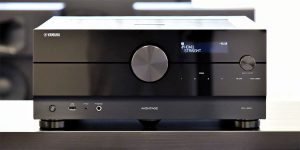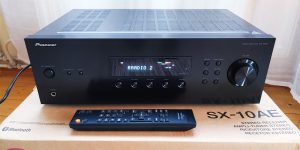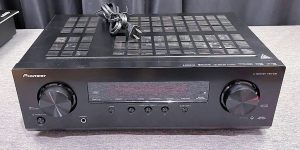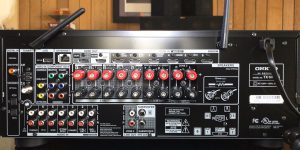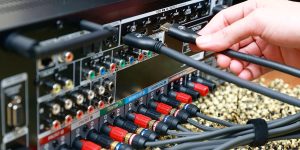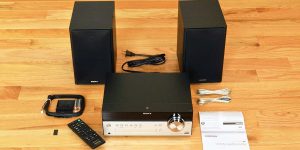If you are choosing an AV receiver, without a single doubt, you have already encountered the ambiguous question of Pre-Out vs. Line-Out, having no clue whatsoever about which one is your bro. Any AV receiver is a pretty complicated device. It offers many functions, contains different ports, and can connect various multimedia devices. Undeniably, it is not surprising that novices find it truly hard to set up the system properly. It is easy to get lost among many functions and capabilities.
In this article, I will explain in detail what pre-out & line-out ports are, highlight their differences and give recommendations on when to use them.
What is Pre-Out?
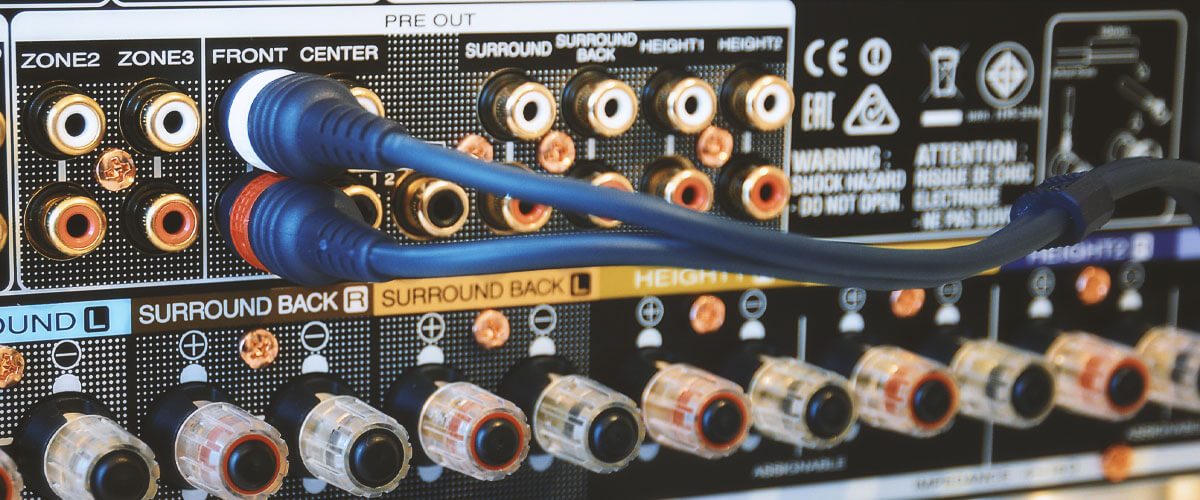
AV receivers with pre-outs are pretty popular on the market. Pre-out is the first step of the sound. Thus, it goes through initial pre-amplification but does not reach the built-in power amplifier. It can be used to connect the receiver with an external power amplifier. In this case, the receiver plays the role of a pre-amplifier, while the external power amplifier controls the quality and loudness of the sound. This port cannot be used without an external power amplifier because the sound there is not amplified enough to drive speakers.
What makes this port pretty useful is that, as a rule, external amplifiers provide better sound quality. Of course, you will need to enhance your budget to get one since those units are not cheap. However, you will definitely have good reasons to do it apart from getting a higher quality sound. We will discuss them a bit later.
What is Line-Out?
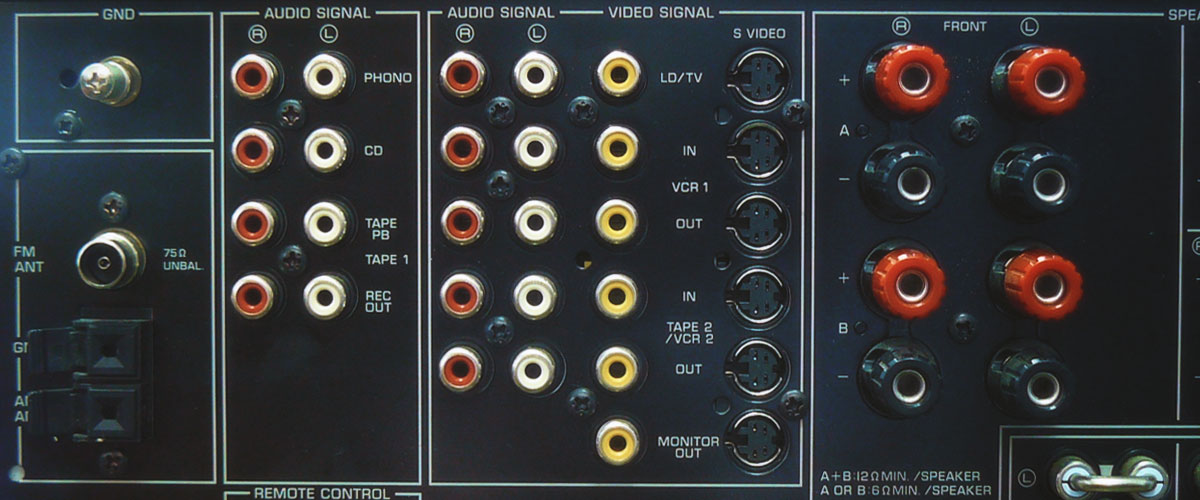
Every time you read about connecting speakers to an AV receiver, you read about Line-Out ports, right? Nope, people often confuse line-out ports with speaker outputs. Those are two different things. A line-out port works only with line-level signals. At the same time, the speaker output transmits speaker-level signals. The difference is that the line-out signal is weaker but not affected by the volume changes.
In multi-channel AV receivers, each speaker channel contains its own signal that doesn’t provide the full sound picture alone. So, a line out-port can be used to, for example, deliver sound to an external sound system, while a speaker out is only intended to be used for the corresponding speaker channel.
The difference between Line-Out and Pre-Out
The main difference is the way these outputs deliver signals. Line-out copies the output from the audio input or mixer and delivers it to the power amplifier system. In turn, the signal from pre-out can be used in monitors or speakers as it provides a bit boosted version of the sound.
Another difference is that the signal from the line-out port can be controlled in terms of volume because you can change this signal’s amplification level. However, in terms of circuity, the line-out requires more complex components. This also results in higher impedance and resistance to the line-out port.
With line-out, you can also connect your AV Receiver to a power source to add capacity and improve the sound quality. This is not possible with the pre-out port.
Benefits of using Pre-Out
Sometimes, when the built-in amplifier in the AV receiver is not doing a great job, you may find yourself in a position where you need an external amplifier. So, you buy it, bring it home, and then what? This is when the pre-out input comes to the rescue because you can use it to connect the unit to the amplifier. Furthermore, you may also connect speakers to the receiver if you don’t need an amplifier.
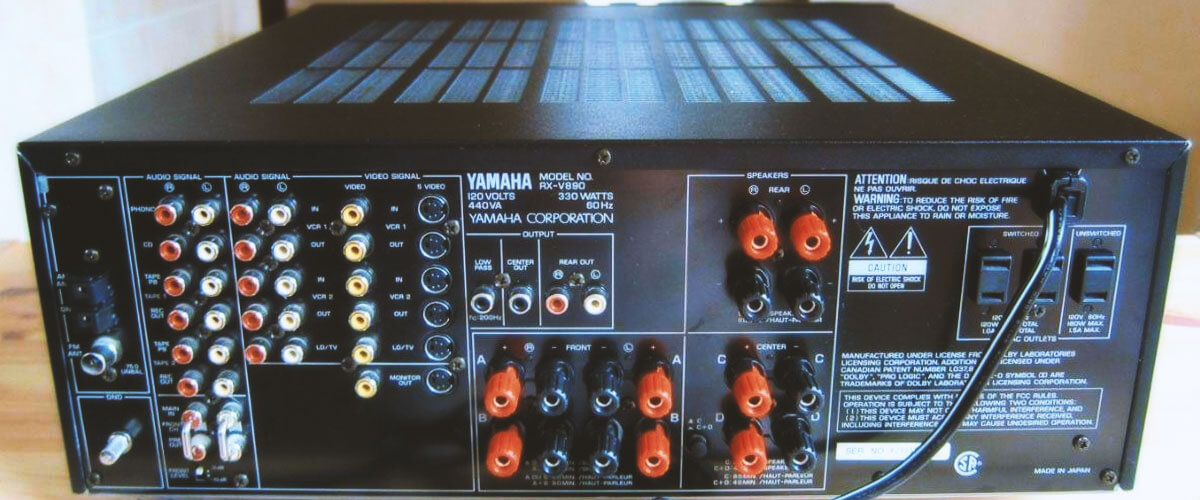
With receiver + amp setup
The pre-out port allows you to unload your receiver because you can use it to connect your speakers to the power amplifier. The external amplifier will control the volume while the receiver will act as a preamp. In this case, you will get high-quality sound with great amplification.
Such a setup gives flexibility to the receiver, as now it works mostly with signals and is responsible for proper management. At the same time, the sound is amplified by a wholly different device, allowing for improved sound quality. You see, built-in amplifiers are nothing in comparison to standalone ones.
With receiver + subwoofer setup
Another popular use of this port is to connect a subwoofer. In the majority of cases, an AV receiver may also have a dedicated subwoofer output. The trick is that a pre-output helps to decrease the overall load on the built-in amplifier.
As a result, the main subwoofers connected to the receiver will have less pressure on them. In turn, this will result in a much higher volume level without any distortion. However, this is only possible if a subwoofer has a built-in amplifier. Even in this case, the subwoofer will only play the bass frequencies, even though the pre-out port can deliver a full spectrum of sound. So, it is better to use a dedicated sub-out port.
Pre-Out channels allow you to create a multi-room audio system
In some models, the receiver’s pre-out ports allow for the creation of multi-room setups. For example, advanced AV receivers often offer Zone 2 feature. It allows the amplifier to manage signals between sets of speakers in two different rooms. So, with pre-out channels, you can use your receiver in multiple zones. In this case, every room will require its own power amplifier. And at the same time, this still will allow you to use your receiver to control the setup.
Consequently, you can arrange a simple multi-room setup while having a 5.1 AV receiver with a single pre-out port. The main room will have the 5.1 system connected directly to the AV receiver. And in the second room, you could have stereo speakers with the external amplifier connected to the AV receiver via the pre-out port.
We are supported by our audience. When you purchase through links on our site, we may earn an affiliate commission at no extra cost to you.
Our newsletter
* We will never send you spam or share your email with third parties

![Best Budget Receivers [Reviewed and Tested]](https://thetechholics.com/wp-content/uploads/2023/10/best-budget-av-receiver-300x150.jpg)
![Best 9-Channels AV Receivers [Reviewed and Tested]](https://thetechholics.com/wp-content/uploads/2023/10/best-9-2-receiver-300x150.jpg)

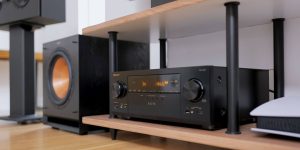
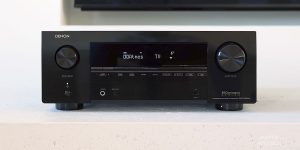
![Pioneer vs Denon Receivers [Top Models Compared and Tested]](https://thetechholics.com/wp-content/uploads/2023/10/denon-vs-pioneer-review-300x150.jpg)
